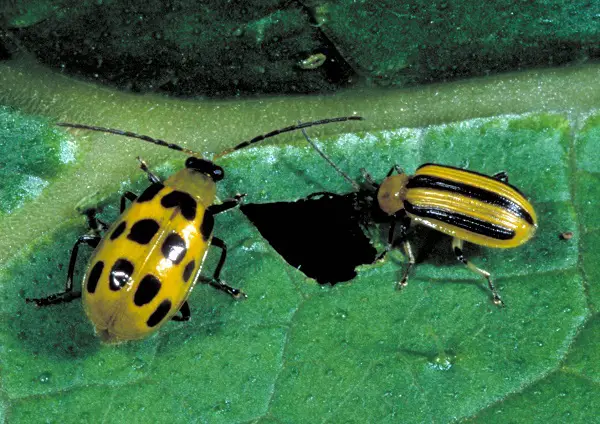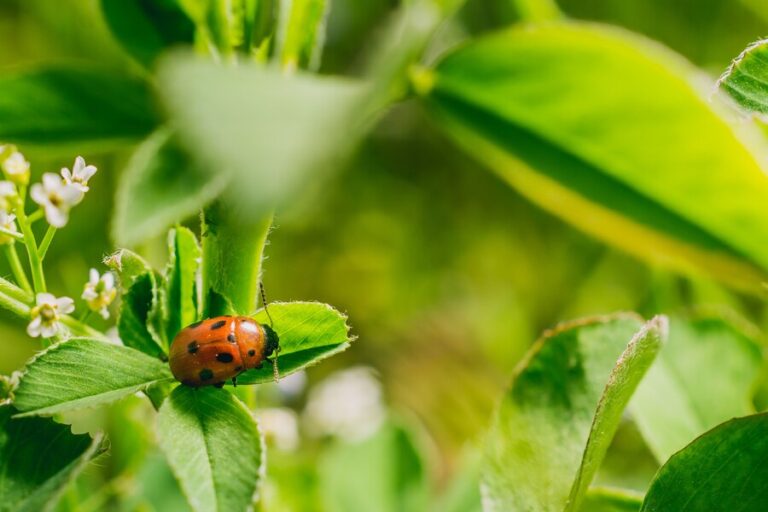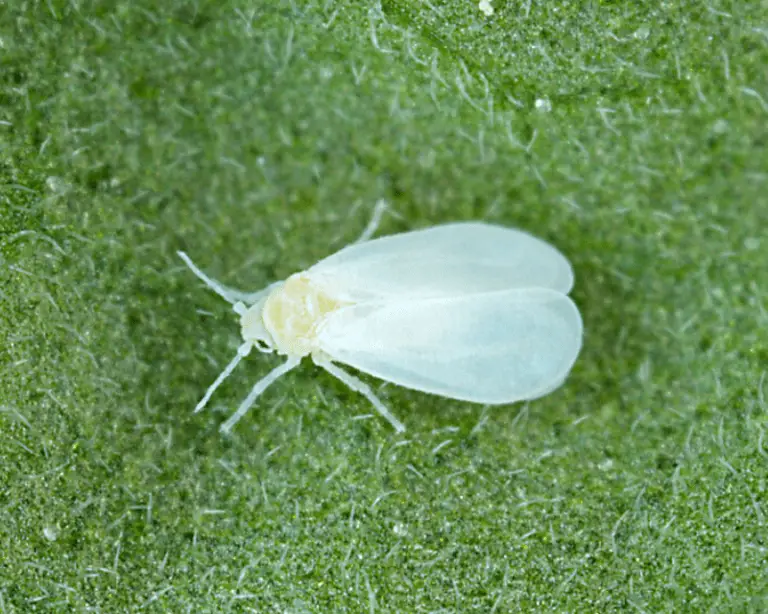How to Get Rid of Thrips: 5 Effective Ways to Manage and Stop These Pests from Your Plants
Table of Contents
Understanding the Thrip Infestation: Identifying the Signs and Symptoms
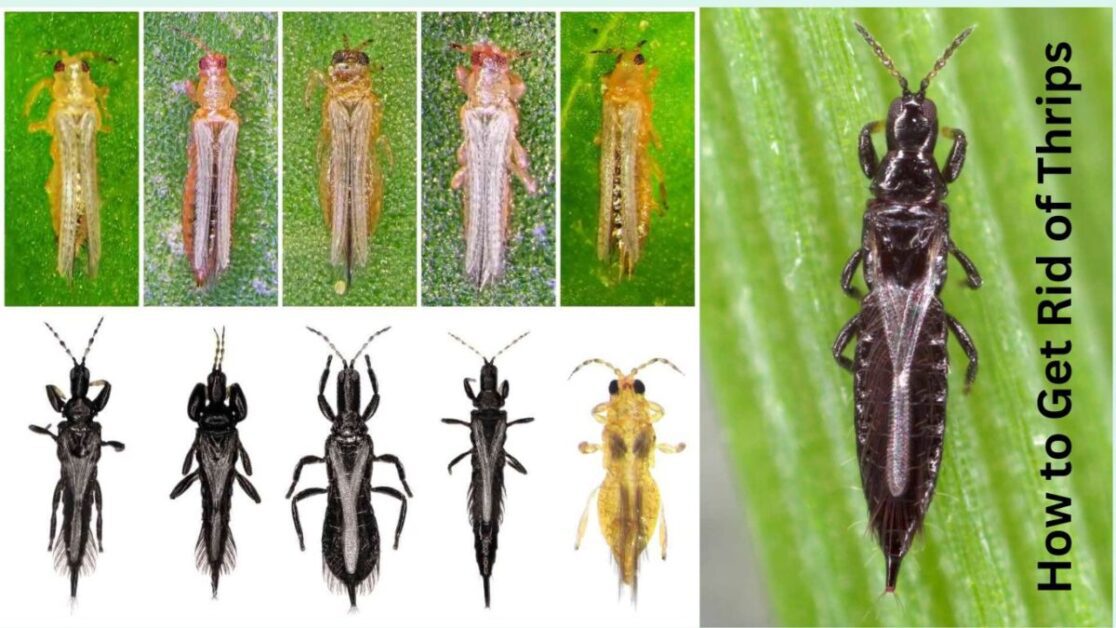
Thrips, tiny insects belonging to the order Thysanoptera, can wreak havoc on your garden if left uncontrolled. Detecting thrip infestations early is crucial in preventing extensive damage to your plants. But how do you identify the signs and symptoms of a thrip infestation?
One telltale sign of thrip damage is the presence of silvery or bronzed streaks on the leaves, stems, and flowers of your plants. As thrips feed on the sap of these plant parts, they puncture the cells, causing a stippling effect that results in discoloration. In addition to streaking, you may notice a distortion in leaf growth, curling or rolling of the leaves, and even leaf drop. These symptoms are particularly noticeable on the undersides of leaves.
Another indicator of thrip activity is the presence of dark, speck-like fecal matter. Thrips excrete black, varnish-like frass as they feed, leaving behind evidence of their destructive presence. Keep an eye out for this frass on leaves, flowers, and nearby surfaces. Additionally, if you observe tiny black nymphs or adults moving quickly along the foliage when you tap or shake the plants, it is a strong indication of a thrip infestation.
By being vigilant and recognizing these signs and symptoms, you can take prompt action to prevent thrips from overtaking your garden and damaging your beloved plants. Understanding the early indicators will allow you to implement appropriate control measures and safeguard the health and vitality of your garden.
Creating a Thrip-Free Environment: Maintaining Cleanliness and Hygiene in Your Garden
Maintaining cleanliness and hygiene in your garden is crucial for creating a thrip-free environment. Thrips are attracted to cluttered and unkempt areas, so regularly cleaning and tidying up your garden is the first step in keeping these pests at bay.
Start by removing any debris or plant residues, as they can serve as breeding grounds for thrips. Rake fallen leaves, trim dead branches, and dispose of any infested plants or plant parts properly. Thrips can also hide and lay eggs in weeds, so make sure to keep on top of weed control.
In addition to general cleanliness, proper sanitation practices can help prevent thrips from infesting your garden. Thoroughly clean and disinfect your gardening tools regularly to avoid spreading thrips from one plant to another. Also, consider using new or sterilized potting soil when replanting to reduce the risk of introducing thrips or their eggs into your garden. By maintaining a clean and hygienic garden environment, you can significantly reduce the chances of a thrip infestation and promote healthy plant growth.
Natural Predators: Introducing Beneficial Insects to Control Thrip Population
Beneficial insects can be valuable allies in controlling thrip populations in your garden. These natural predators have an appetite for thrips and can significantly reduce their numbers, without the need for chemical insecticides. Ladybugs, lacewings, and predatory mites are some of the common beneficial insects that can be introduced to your garden to combat thrips.
Ladybugs, or lady beetles, are voracious feeders and can consume up to 50 thrips per day. They prey on both adult thrips and their eggs, effectively breaking the life cycle of these pests. Lacewings are another beneficial insect that can provide effective thrip control. The larvae of lacewings, often referred to as aphid lions, are fierce predators and can quickly devour thrips. Predatory mites, on the other hand, feed on thrips by piercing their bodies and extracting their bodily fluids. These tiny mites can be applied to plants as a preventive measure or as a targeted solution to an existing infestation.
When introducing beneficial insects to control thrip populations, it’s important to consider the specific requirements of each species. The timing and method of release, as well as the availability of suitable food sources, are crucial factors for their success. To ensure the effectiveness of these natural predators, it is recommended to thoroughly study the life cycle and behavior of each insect, and consult with local experts or suppliers for guidance on optimal release strategies. By harnessing the power of beneficial insects, you can establish a natural balance in your garden and prevent thrip infestations from causing extensive damage to your plants.
Organic Solutions: Utilizing Organic Pesticides and Homemade Remedies
Organic pesticides and homemade remedies offer a natural and environmentally-friendly approach to combatting thrip infestations in your garden. These alternatives not only help protect your plants from harmful chemicals, but also promote the overall health and balance of your garden ecosystem.
One effective organic pesticide is neem oil. Derived from the neem tree, neem oil acts as a broad-spectrum insecticide, disrupting the feeding and breeding patterns of thrips. When applied to affected plants, neem oil suffocates and repels thrips, ultimately reducing their population. Additionally, neem oil is safe to use on a wide variety of plants and does not harm beneficial insects, making it a sustainable choice for controlling thrips.
Homemade remedies, such as garlic spray, can also be effective in managing thrip infestations. Garlic’s natural compounds have insecticidal properties that work to repel thrips. To create a garlic spray, simply crush a few garlic cloves and steep them in water overnight. Strain the mixture and transfer it to a spray bottle, then apply it to your plants. Remember to reapply the spray regularly to maintain its effectiveness.
By utilizing organic pesticides like neem oil and homemade remedies such as garlic spray, you can effectively control thrip populations in your garden while maintaining a healthy and pesticide-free environment. Experiment with different approaches and observe the results to find the most suitable solution for your particular thrip infestation.
Chemical Treatments: Exploring Effective Insecticides to Combat Thrips
Chemical Treatments: Exploring Effective Insecticides to Combat Thrips
Thrips infestations can be a relentless and frustrating challenge for gardeners. While cultural control methods and natural predators can help manage these pests, sometimes the situation calls for more aggressive measures. Chemical treatments, when used appropriately, can effectively combat thrips and minimize their impact on your plants.
When considering chemical treatments for thrip control, it is crucial to prioritize products that are specifically labeled for this pest and safe for use on your plants. Some commonly used insecticides for thrips include pyrethroids, neonicotinoids, and spinosad-based products. These chemicals work by directly affecting the nervous system of the thrips, leading to their demise.
It is important to note that chemical treatments should be used as a last resort and with caution. Before applying any pesticides, carefully read and follow the instructions provided by the manufacturer. Follow the recommended dosage, application method, and safety guidelines to ensure effective and responsible use. Additionally, consider the potential impact on beneficial insects and other non-target organisms in your garden, as some insecticides can harm them. Always prioritize the health and well-being of your plants, yourself, and the environment when utilizing chemical treatments for thrip control.
By integrating appropriate chemical treatments into your thrip management strategy alongside other control methods, you can effectively combat these persistent pests and safeguard the health of your garden. Remember to always seek professional advice if you are unsure or encounter severe thrip infestations that require expert intervention. Together, with a comprehensive approach, we can ensure a thriving and thrip-free gardening experience.
Physical Barriers: Erecting Nets and Screens to Prevent Thrips from Entering Your Garden
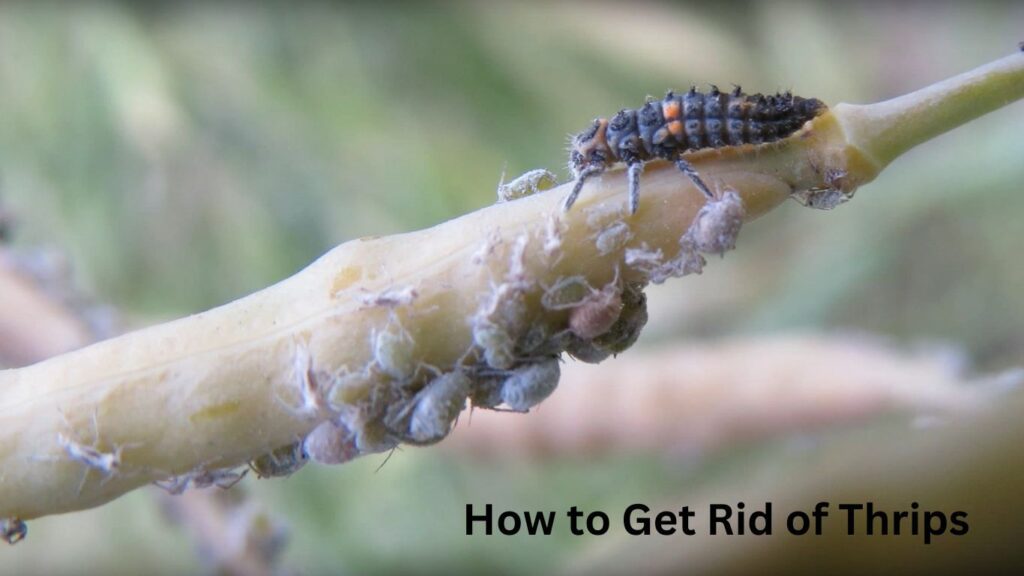
Physical barriers such as nets and screens can be highly effective in preventing thrips from infiltrating your garden and wreaking havoc on your plants. By erecting these barriers, you create a physical blockade that serves as a formidable defense against these tiny pests. Thrips, which have a propensity for flying and jumping, can be deterred by the fine mesh of the nets and screens, reducing the likelihood of their entry into your garden.
One of the key advantages of utilizing nets and screens is their ability to act as a preventive measure, averting thrip infestations before they even have a chance to take hold. These physical barriers serve as a proactive solution, preventing these insects from gaining access to your plants and causing widespread damage. By implementing nets and screens in your garden, you establish an additional layer of protection against thrips, safeguarding your cherished plants and preserving their health and vitality.
Remember, however, that while nets and screens are an effective physical barrier against thrips, they may pose a challenge when it comes to essential pollination. Therefore, it is crucial to strike a balance between protection and providing an environment conducive to natural pollination processes. Stay tuned for our upcoming articles, where we will explore other strategies and methods to combat thrip infestations and protect your garden.
Proper Plant Care: Optimizing Plant Health to Minimize Thrip Attraction
Proper plant care is crucial in creating a garden environment that is less attractive to thrips. Thrips are particularly drawn to plants that are stressed or weakened in some way, making them more susceptible to infestation. By optimizing plant health, we can minimize the risk of thrips finding our plants appealing.
One key aspect of proper plant care is ensuring that plants are receiving the appropriate amount of water and nutrients. Too much or too little of either can weaken the plants, making them more vulnerable to thrips. It is essential to monitor the moisture levels of the soil and adjust watering accordingly. Additionally, providing plants with well-balanced fertilizers can help strengthen their natural defenses against pests.
Another important factor to consider is the overall health and vigor of the plants. Regularly inspecting and promptly addressing any signs of disease or pest infestation is vital. Pruning diseased or damaged plant parts can help prevent the spread of problems and also eliminate hiding places for thrips. Additionally, practicing good garden hygiene, such as removing fallen leaves and debris, can reduce the chances of thrips finding suitable habitats. By prioritizing plant health and implementing proper care practices, we can significantly decrease the attractiveness of our garden to thrips.
Thrip Trap Strategies: Using Sticky Traps and Blue Sticky Boards to Catch and Monitor Thrips
Thrip Trap Strategies:
Using Sticky Traps and Blue Sticky Boards to Catch and Monitor Thrips
Sticky traps and blue sticky boards are effective tools for managing thrips in your garden. These traps work by attracting thrips with their bright color and sticky surface, which causes the pests to get stuck and unable to continue their destructive activities. Simply hang or place these traps near plants that are prone to thrip infestations, and they will act as a monitoring device, enabling you to assess the severity of the problem.
One of the key advantages of using sticky traps and blue sticky boards is their ability to provide early detection of thrip infestations. By monitoring these traps regularly, you can catch thrips in their early stages and take appropriate action before the population grows out of control. Additionally, these traps are environmentally friendly and pose no harm to beneficial insects, making them a safe and sustainable option for thrip control.
Cultural Control Methods: Removing Infected Plant Parts and Practicing Crop Rotation
Cultural control methods play a vital role in managing thrip infestations and preventing their recurrence. One effective technique is removing infected plant parts promptly. Thrips often target young and tender growth, causing damage and leaving behind their eggs or larvae. By carefully inspecting plants on a regular basis and removing any signs of infestation, you can eliminate a breeding ground for these pests and disrupt their life cycle. Be sure to dispose of the infected plant parts properly, as thrips can still survive and spread if not handled correctly.
Another important cultural control method is practicing crop rotation. Thrips tend to thrive in specific plant species and can quickly multiply when given the opportunity. By rotating your crops each season, you reduce the chance of thrips establishing a permanent presence in your garden. This method disrupts their feeding and reproduction patterns, and it also helps to break the cycle of disease transmission that can accompany thrip infestations. Proper crop rotation can be achieved by dividing your garden into different zones or beds and rotating the types of plants you grow in each area. This simple practice can significantly reduce the risk of thrip infestations and promote overall plant health in the long run.
UV Light Solutions: Incorporating Ultraviolet Light to Repel and Eliminate Thrips
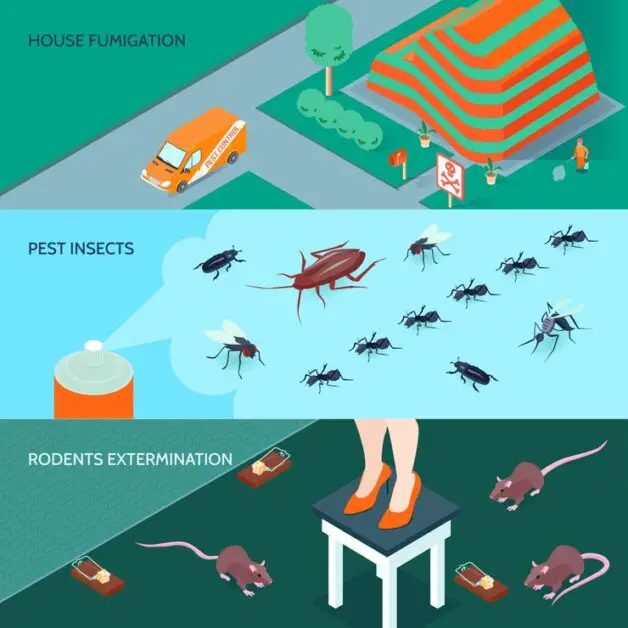
UV light solutions have gained popularity in recent years as an effective method to repel and eliminate thrips. Thrips, being highly attracted to UV light, can be effectively targeted and controlled using this method. Incorporating ultraviolet lights in your garden can help reduce thrip infestations and protect your plants.
Research has shown that UV light disrupts thrip behavior, making it an efficient tool in combating these pests. The light acts as a deterrent, interfering with thrip navigation and feeding patterns. By strategically placing UV light sources in your garden, you can create an environment that is less attractive to thrips, reducing their population and damage to your plants.
Studies have also demonstrated that UV light can directly impact thrips by causing physiological changes and even mortality. Exposure to UV light can lead to damage to the thrips’ cellular structure and disrupt their reproductive cycles. This natural method offers a safe alternative to chemical insecticides while promoting a healthier and more sustainable gardening practice.
When incorporating UV light solutions in your garden, it is important to consider the specific needs of your plants and the recommended duration and intensity of exposure. Consulting with experts or referring to reputable sources can help ensure that you utilize UV light in a manner that maximizes its effectiveness while minimizing potential harm to your plants.
As you embark on your journey to combat thrip infestation in your garden, keep in mind that incorporating ultraviolet light can be an effective and environmentally friendly solution. By understanding the behavior of thrips and strategically placing UV light sources, you can create an environment that discourages these pests and promotes the health and vitality of your plants.
Thrip-Resistant Plants: Choosing Varieties that are Naturally Less Attractive to Thrips
Thrip infestations can cause significant damage to your garden plants, leading to stunted growth, distorted leaves, and reduced yield. However, by choosing thrip-resistant plant varieties, you can minimize the risk of attracting these troublesome pests and ensure a healthier garden.
Thrip-resistant plants are those that possess natural defense mechanisms, such as thicker leaves and tougher cell structures, which make them less appealing to thrips. These plants have developed genetic traits that enable them to resist or tolerate thrip feeding, reducing the likelihood of severe infestations. By including thrip-resistant varieties in your garden, you can create a more resilient and low-maintenance growing environment.
One such thrip-resistant plant is the marigold (Tagetes spp.), known for its vibrant flowers and strong fragrance. Marigolds emit aromatic chemicals that repel thrips and other pests, making them an excellent choice for companion planting. Another option is the catnip plant (Nepeta spp.), which contains nepetalactone, a compound that repels thrips. The pungent scent and volatile oils released by catnip act as natural deterrents, discouraging thrips from settling on nearby plants.
Choosing thrip-resistant plant varieties not only helps reduce the risk of infestations but also contributes to ecological balance in your garden. By cultivating plants that naturally deter thrips, you can minimize the need for chemical interventions and create a harmonious environment for beneficial insects. Remember, prevention is always better than a cure, and selecting thrip-resistant plants is a proactive step towards maintaining a healthy garden.
• Thrip-resistant plants possess natural defense mechanisms, such as thicker leaves and tougher cell structures.
• These plants have genetic traits that enable them to resist or tolerate thrip feeding.
• Including thrip-resistant varieties in your garden creates a more resilient and low-maintenance growing environment.
• Marigolds emit aromatic chemicals that repel thrips and other pests, making them an excellent choice for companion planting.
• Catnip contains nepetalactone, a compound that repels thrips through its pungent scent and volatile oils.
• Choosing thrip-resistant plant varieties helps reduce the risk of infestations and contributes to ecological balance in your garden.
Thrip Prevention Techniques: Implementing Early Detection and Regular Inspections
Implementing early detection and regular inspections is crucial for effective thrip prevention in your garden. By being proactive and vigilant, you can identify thrip infestations early on, minimizing the potential damage they can cause to your plants.
Regularly inspecting your plants, particularly the new growth and the undersides of leaves where thrips often hide, allows you to catch thrip populations before they reach damaging numbers. Look for signs such as silvery streaks, discolored patches, distorted leaves, or black fecal matter. Examine your plants closely and use a magnifying glass if needed to spot the tiny, slender insects.
Early detection provides you with the opportunity to intervene promptly and implement appropriate control measures. It ensures that you can take action before the infestation becomes uncontrollable, potentially saving your plants from severe damage and reducing the need for more aggressive treatments. Remember to check not only your garden plants but also any indoor plants or seedlings to prevent thrips from spreading throughout your entire gardening space.
Here’s a table outlining 5 effective ways to manage and stop thrips from infesting your plants:
| Method | Description |
|---|---|
| 1. Neem Oil | – Apply neem oil to the affected plants, covering both sides of leaves. – Neem oil disrupts thrip feeding and inhibits their reproduction. – Repeat applications regularly, especially after rain. |
| 2. Insecticidal Soap | – Use insecticidal soap, a non-toxic option for thrip control. – Spray the solution on plants, covering affected areas thoroughly. – Apply as needed, and ensure complete coverage for efficacy. |
| 3. Beneficial Insects | – Introduce natural predators like predatory mites, lacewings, or ladybugs. – These beneficial insects feed on thrips and help control their population. – Regular release may be required for ongoing management. |
| 4. Yellow Sticky Traps | – Place yellow sticky traps near plants to attract and trap adult thrips. – Regularly monitor and replace the traps as they become covered with thrips. – Helps reduce adult thrip populations and monitor infestations. |
| 5. Reflective Mulch | – Use reflective mulch around plants to deter thrips. – The reflective surface disorients and repels thrips, reducing their attraction to the plants. – Combine with other control methods for comprehensive management. |
Note: It’s often effective to combine multiple methods for better control, as part of an integrated pest management (IPM) approach. Monitor plants regularly, isolate infected ones, and maintain good overall plant health to prevent thrips and other pests from becoming a significant problem.
Seeking Professional Help: Consulting with Pest Control Experts for Severe Thrip Infestations.
When faced with a severe thrip infestation in your garden, it may be time to seek professional help from pest control experts. These professionals have the knowledge and experience to assess the extent of the infestation and provide targeted treatments to eliminate thrips from your plants.
One of the main advantages of consulting with pest control experts is their access to a wide range of pest management techniques and products. They are well-versed in the latest research and advancements in thrip control, allowing them to recommend the most effective solutions for your specific situation. Additionally, pest control experts often have access to professional-grade insecticides and equipment that may not be readily available to home gardeners. By working with these professionals, you can benefit from their expertise and access to specialized products, ensuring a more thorough and efficient thrip elimination process.
Furthermore, pest control experts can provide valuable guidance on preventive measures to help minimize the risk of future thrip infestations. They can advise you on proper garden care practices, such as regular inspections, early detection of pests, and implementing appropriate preventive techniques. Their insights can help you create a long-term plan to maintain a thrip-free environment in your garden. So, if you find yourself struggling with a severe thrip infestation, it’s time to consider seeking professional help to ensure the health and vitality of your plants.
What are the signs and symptoms of a severe thrip infestation?
Some common signs of a severe thrip infestation include browning or silvering of leaves, distorted or stunted growth, and the presence of black fecal droppings on leaves.
How can I create a thrip-free environment in my garden?
Maintaining cleanliness and hygiene in your garden is crucial to prevent thrip infestations. This involves regularly removing weeds, debris, and fallen leaves, as well as practicing good sanitation by properly disposing of any infested plant material.
Are there any natural predators that can help control thrip populations?
Yes, introducing beneficial insects such as predatory mites, ladybugs, and lacewings can help control thrip populations by preying on them. These natural predators can be purchased from pest control suppliers.
Can I use organic pesticides or homemade remedies to control thrips?
Yes, organic pesticides made from ingredients like neem oil, insecticidal soap, or garlic extract can help control thrips. Additionally, homemade remedies like a mixture of water and dish soap or vinegar can be effective in reducing thrip infestations.
Are there any effective insecticides I can use to combat thrips?
Yes, there are chemical insecticides available that can effectively control thrips. It is important to carefully follow the instructions and safety precautions provided by the manufacturer when using these products.
How can I prevent thrips from entering my garden?
Erecting nets and screens over windows, doors, and ventilation openings can act as physical barriers to prevent thrips from entering your garden. Additionally, sealing any gaps or cracks in walls or fences can help minimize their entry points.
What can I do to optimize plant health and minimize thrip attraction?
Proper plant care practices, such as providing sufficient sunlight, watering appropriately, and fertilizing adequately, can help optimize plant health and make them less attractive to thrips.
How can sticky traps and blue sticky boards help catch and monitor thrips?
Sticky traps and blue sticky boards are coated with a sticky substance that attracts and traps thrips. By placing these traps strategically in your garden, you can catch thrips and monitor the severity of infestations.
Are there any cultural control methods to manage thrip infestations?
Yes, removing infected plant parts, such as leaves or flowers, can help reduce thrip populations. Additionally, practicing crop rotation by alternating plant species in different growing seasons can disrupt thrip life cycles and prevent reinfestation.
Can ultraviolet light be used to repel and eliminate thrips?
Yes, incorporating ultraviolet (UV) light sources, such as UV lamps or UV-reflective mulches, can repel and eliminate thrips. This is because thrips are attracted to UV light and exposing them to high levels of UV radiation can be lethal.
Are there any thrip-resistant plants that I can choose for my garden?
Yes, there are certain plant varieties that are naturally less attractive to thrips. Research and choose plant varieties known for their resistance to thrips to minimize the risk of infestation.
When should I seek professional help for severe thrip infestations?
It is advisable to consult with pest control experts when you have a severe thrip infestation that is difficult to manage using DIY methods. Professional help can provide specialized knowledge and effective treatment options for severe cases.


